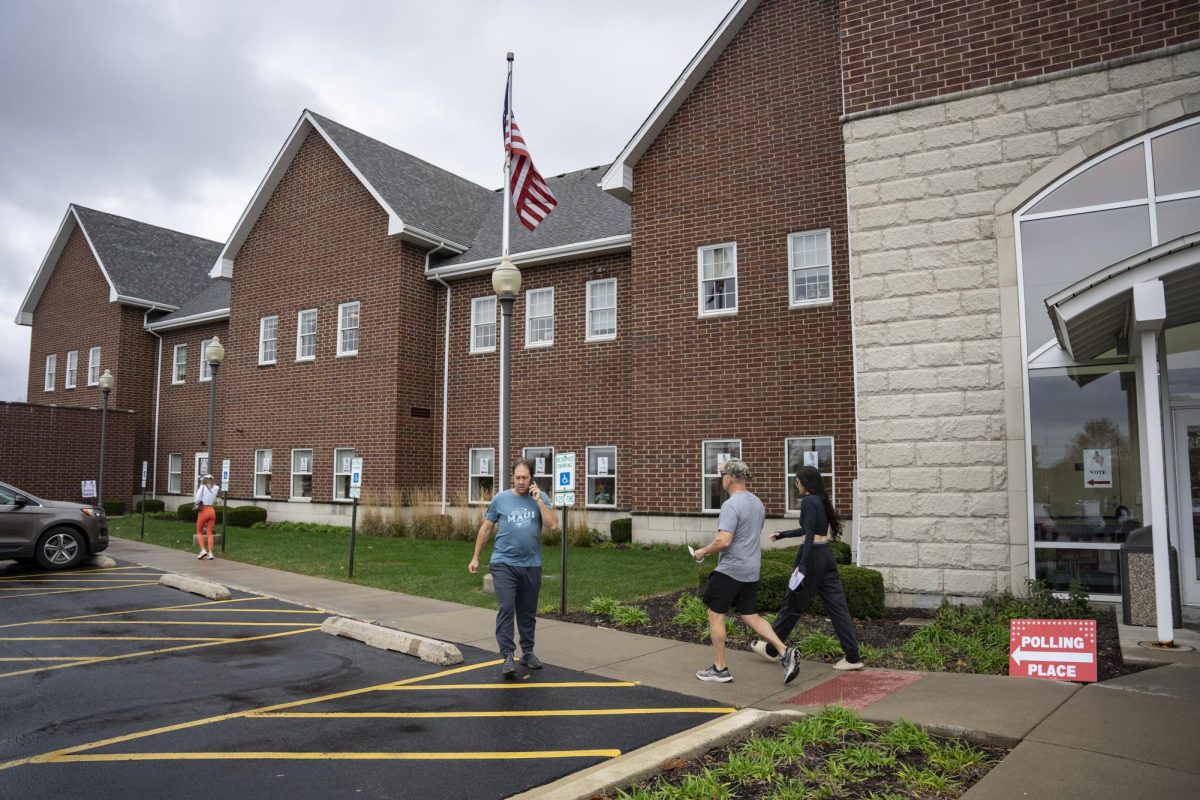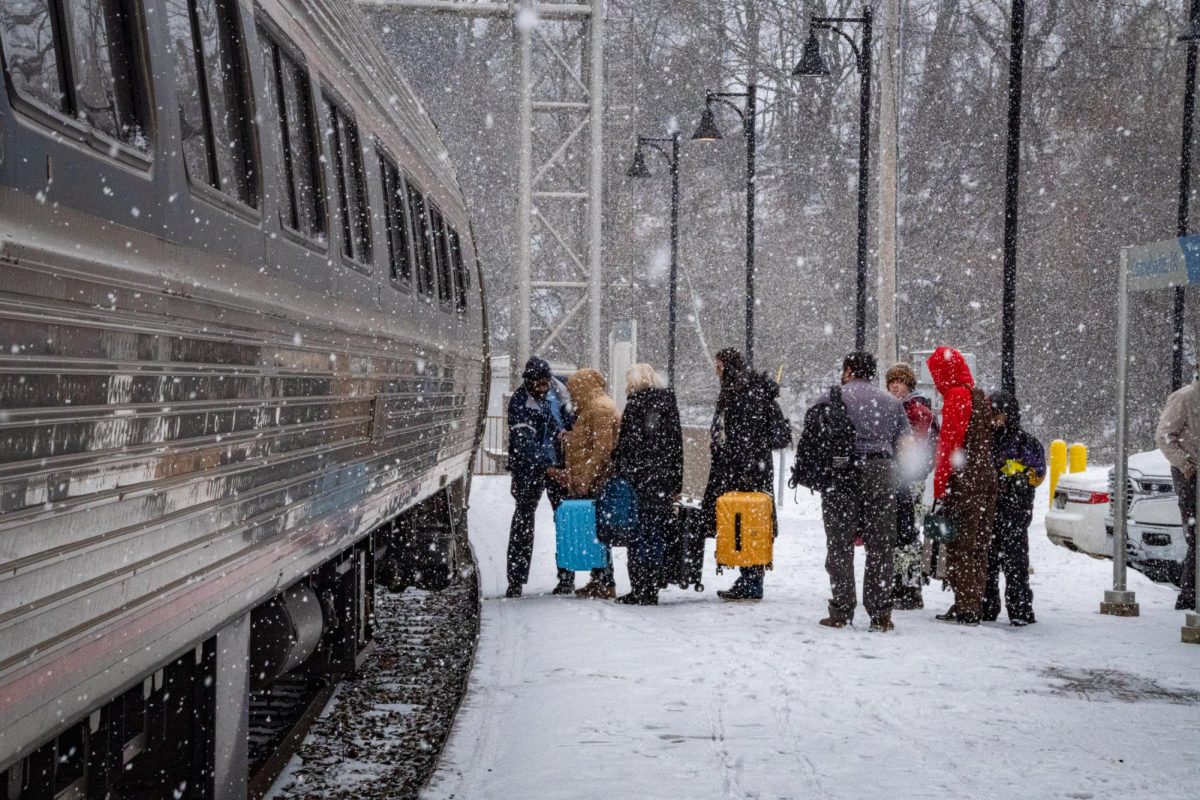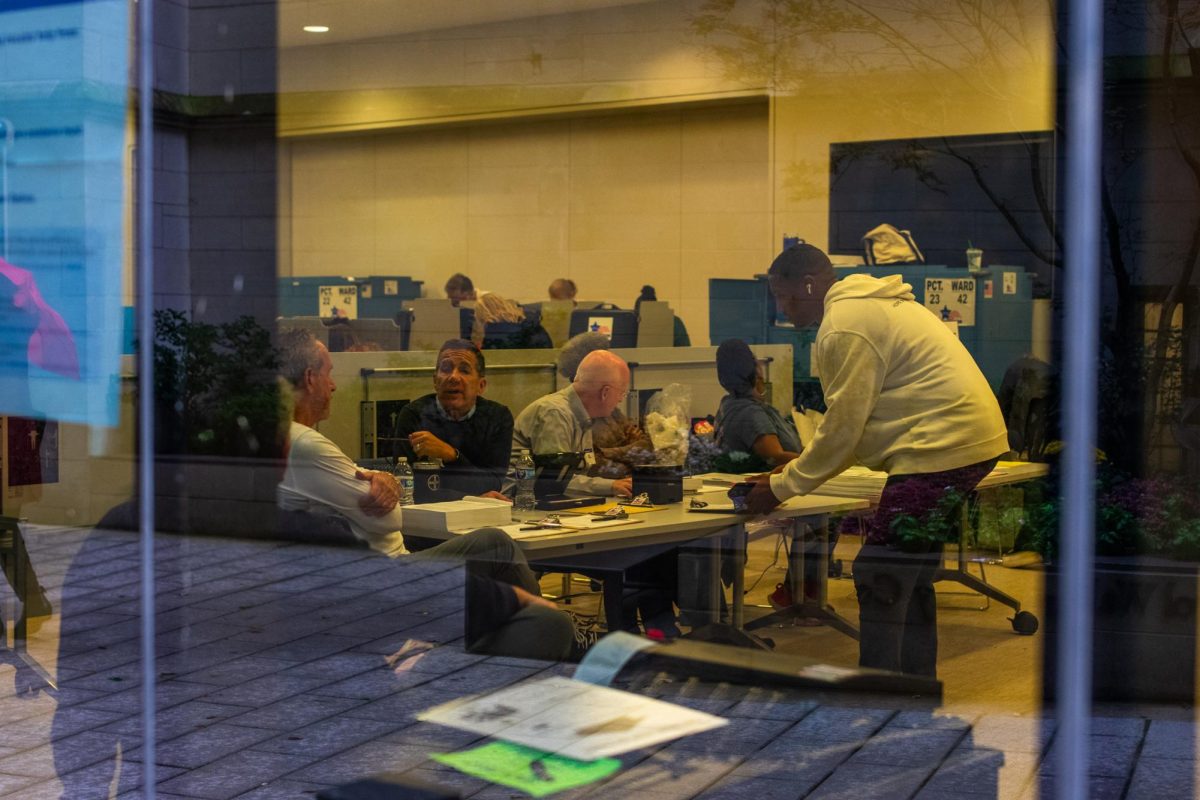With polls closing and results coming in, all eyes are on the seven swing states across the country that could tip the scales in the 2024 presidential election.
These seven states—Arizona, Georgia, Michigan, Nevada, North Carolina, Wisconsin and Pennsylvania—have the chance of going either way, making them crucial in the path to victory for both former President Donald Trump and Vice President Kamala Harris.
No swing state winners had been called by 9 p.m.
NEVADA
Nevada is the swing state with the fewest electoral college votes at an even six. Despite this number, Nevada could still be a deciding factor in the election—those six votes could push either candidate to 270.
Since 2008, Nevada has voted blue, though usually by small margins. Clark and Washoe are the only two counties to vote blue in the last two presidential elections, but they make up around 90% of Nevada’s population. Both candidates’ policies for taxes on tips will have a large effect on those working in or near the city as the service industry is a major contributing factor to the economy of Las Vegas.
Nevada has one of the highest unemployment rates in the country at 5.6% as of September 2024. COVID-19 was particularly harsh to unemployment rates in Nevada, reaching 9.2% in December 2020.
Despite this, 33% of Nevadans identified as nonpartisan, according to a February report, who have been targeted heavily by the campaigns.
Latino and Asian American voters are incredibly important to Nevada’s electorate. In 2020, Latino voters made up 17% of the electorate. Nevada is the swing state with the second-highest percentage of eligible Hispanic voters only after Arizona. Asian American voters currently make up 12% of the electorate. According to exit polling conducted by Edison Research following the 2021 election, 61% of Latino voters voted for President Joe Biden; 64% of Asian American voters voted for Biden. Despite Trump’s explicitly racist comments towards both groups, voters are nostalgic for Trump-era pre-COVID-19 costs of living.
GEORGIA
Georgia will be a focal point on Election Night due to its pivotal role as a swing state. Its political landscape has become highly competitive as suburban areas around Atlanta, once Republican strongholds are now more diverse and increasingly Democratic.
This shift, combined with a growing young and minority voter base, has transformed Georgia from reliably red to a key battleground. Georgia is also worth 16 electoral votes, so both candidates have been fighting hard for this state.
Georgia has also seen a major increase in voters from 2016 to 2020, “with more than 5 million ballots cast, a difference of around 1 million from the 2016 election,” according to Southern Collections For Social Justice.
Georgia has gone red 75% of the 12 elections in the past 50 years, also helping choose the winning candidate another 75% of those 50 years, including when they unexpectedly selected Biden in 2020, turning blue for the first time since 1992.
WISCONSIN
Wisconsin was previously a member of the “Blue Wall,” a group of states that reliably voted Democrat in presidential elections until about 2012 but has since become a swing state.
In the 2020 election, Wisconsin wasn’t called until the afternoon after election day, Wednesday the 4th but Biden flipped it by less than one percentage point.
Wisconsin is majority white with 86% of census responses identifying as white, alone. Black or African Americans make up 6.6% of census responses. Hispanic and/or Latino make up 8.1%, American Indian and Alaska Native make up 1.2%, and Asian Americans make up 3.3%
Wisconsin has 10 electoral votes.
As “America’s Dairyland,” Wisconsin’s biggest issue is the state of the economy. Many Wisconsin farmers and small businesses state that the economy is a big worry for them as they walk into the polls. In the 2020 election, Trump sued the state for a recount, highlighting concern over election integrity. On the 2024 ballots, Wisconsin is introducing a law to rewrite two sections of the state constitution, describing who is eligible to vote.
NORTH CAROLINA
Democratic presidential candidates have won North Carolina only twice: in 1976 and 2008. However, the state has remained competitive in recent elections. Trump won North Carolina twice but received less than 50 percent of the vote on both occasions.
In 2020, he narrowly defeated Biden by about one percentage point, marking his smallest winning margin in any state. North Carolina Democrats had a 75.1% turnout in comparison to an 81.6% turnout for Republicans that year.
In the 2024 election, North Carolina has 16 out of the 538 electoral college votes. Back in 2020, the state had 15. According to a WalletHub study, North Carolina voters make it one of the most influential states in the 2024 election, coming in second behind Nevada.
North Carolina is one of eight states that encompasses half of the eligible Black voters in the U.S.
The state, like much of the rest of the country, is majorly divided by gender on both sides. Hurricane Helene and government action may prove to also influence votes for Harris and Trump.
ARIZONA
The state of Arizona represents 11 Electoral College votes, has nine Congressional Districts and two U.S. Senators. Phoenix and its suburbs often determined election outcomes in Arizona where its 2.4 million voters comprise more than half the registered voters in the state.
According to Adrian Fontes, secretary of state, 35.7% of Arizona residents are registered as Republican, and 29% as Democrat. As 32.5% of the residents are Hispanic, 52.9% white, 4.8% Black, 3.7% American Indian/Alaska Native and 3.8% Asian/Pacific Islander, major issues in the state include immigration and border security, education, long-term water supply and inflation.
In Arizona, abortion rights are on the ballot, and the outcome could change state law drastically. Arizona’s Proposition 139 shows the growing trend where states take direct votes on reproductive rights issues after Roe v. Wade was overturned. Their vote is crucial as Arizona can go either way, reflecting the presence of both conservative and liberal populations.
MICHIGAN
Michigan historically voted Democratic in every presidential election between 1992 and 2012 but in 2016 Trump took the state by just 0.2%. Biden took back Michigan four years later with a 2.8% victory over Trump, reclaiming Michigan as a blue state.
According to an October AARP survey, 57% of voters 50 and older said that the most important issues are personal economic matters, such as inflation, economy/jobs and Social Security.
Michigan has 15 electoral votes at play for this election. Out of the seven swing states, Michigan has the fourth largest amount of claimable electoral votes, just behind North Carolina, Georgia and Pennsylvania.
Out of all the states, Michigan has the highest Arab American population. Both Trump and Harris have received support from prominent members of the Arab community.
Michigan has historically been an industrial manufacturing hub, with Detroit having the greatest exports of automobiles and auto parts. As manufacturing has left the state, as well as the country, the concentration of blue-collar workers makes labor issues paramount.
According to the Michigan Department of State, “approximately 1.3 million Michiganders 18-29 are currently active registered voters.” One of those issues for Michigan’s young voters is a sense of intimidation when it comes to registering to vote and completing the process of voting for the first time. On the other hand, however, young voters see civic engagement as a large enough umbrella that voting is just one tool for them to make a difference.
PENNSYLVANIA
According to a Pew Research Center Religious Landscape Study, 39% of adults identify as or lean Republican, 46% identify or lean Democrat, and 15% describe themselves as unaffiliated in the swing state.
In what CBS described to be an “unprecedented situation,” young voters have a powerful and impactful role in this “marginal race,” in terms of unpredictable voting behaviors such as celebrity candidate endorsements, first-time voters eager to engage in a high-stakes election and social media that did not play as big of a role with the previous generation.
The site 270toWin reports Pensylvannia’s history of a Democratic majority in elections from 1992-2012, where the streak was broken by the Republican majority in 2016, and back to the Democratic Party in 2020. The state’s elections consisted of extremely close call votes, with 2020 consisting of 50.0% Democratic votes, and only 48.8% Republican, building suspense for the next one on Nov. 5.
Additional reporting by Trinity Balboa, Hunter Warner, Catherine Pineda, Morgan Kromer, Emily Ramirez, Samantha Ho, Lily Thomas, Sofía Oyarzún, Maya Liquigan, Adriah Hedrick, Matthew Brady, Sebastian Isett, Doreen Abril Albuerne-Rodriguez, Cin Castellanos and Kate Larroder
Copy edited by Doreen Abril Albuerne-Rodriguez and Vanessa Orozco










